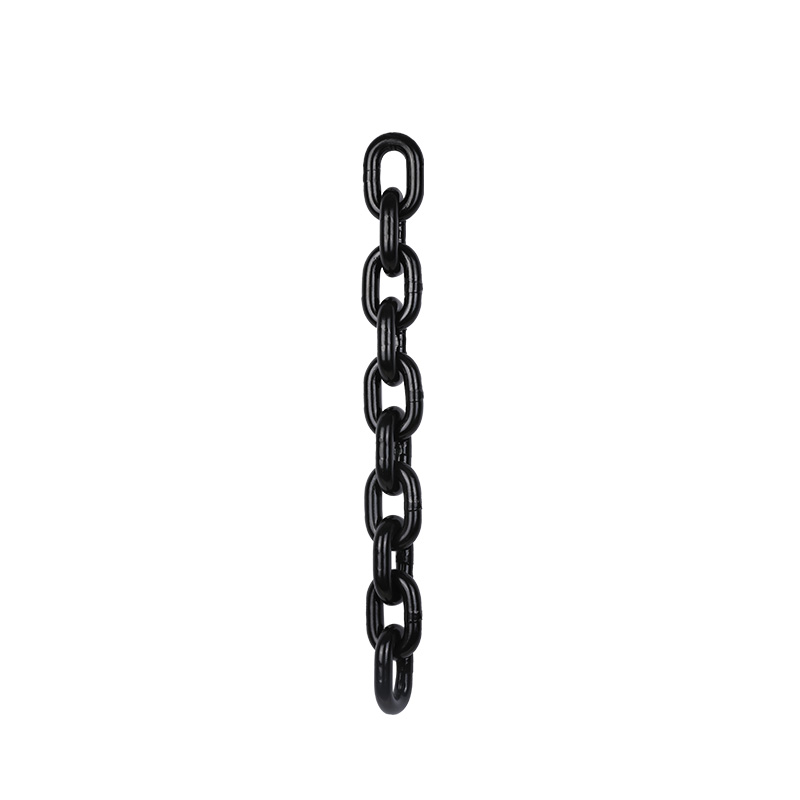Home / News / Industry News / Here are some considerations regarding the use of NACM 84/90 standard link chains in different environmental conditions
Here are some considerations regarding the use of NACM 84/90 standard link chains in different environmental conditions
Oct 19,2023
The NACM (National Association of Chain Manufacturers) 84/90 standard link chain, like most chain types, is used in a variety of environmental conditions, and its performance can be influenced by factors such as exposure to weather, moisture, and corrosion. Here are some considerations regarding the use of NACM 84/90 standard link chains in different environmental conditions:
Indoor Use: When used indoors in controlled environments, NACM 84/90 standard link chains are less susceptible to environmental factors. In such conditions, they are less likely to experience corrosion or degradation due to weather exposure.
Outdoor Use: When used outdoors, the choice of finish and material becomes crucial. Chains with galvanized or zinc-plated finishes offer better corrosion resistance, making them suitable for outdoor applications. These finishes provide a protective layer that helps prevent rust and corrosion from exposure to rain, humidity, and varying temperatures.
Marine Environments: For marine applications where chains are exposed to saltwater and salt spray, corrosion resistance is of utmost importance. Stainless steel chains or galvanized chains are often preferred in such conditions, as they have better resistance to saltwater corrosion.
High Humidity: In high-humidity environments, the risk of corrosion increases. Proper storage and maintenance are essential to prevent moisture from compromising the integrity of the chain. Lubrication can also help protect the chain from humidity-related corrosion.
Chemical Exposure: Chains used in environments where they may come into contact with chemicals or corrosive substances should be made from materials that are resistant to those chemicals. Stainless steel chains, for example, have good chemical resistance.
Extreme Temperatures: Chains can be used in both hot and cold environments. However, extreme temperature fluctuations can affect the chain's performance over time. Proper lubrication and maintenance are essential in these cases to prevent excessive wear and stress on the chain.
UV Exposure: Prolonged exposure to ultraviolet (UV) radiation from the sun can degrade chain finishes and reduce their corrosion resistance. If the chain will be exposed to direct sunlight for extended periods, it may require additional protection or coatings to maintain its integrity.
Abrasive Environments: In environments with abrasive materials, such as sand or gravel, chains may experience increased wear and should be inspected and maintained more frequently.
Regular Inspection and Maintenance: Regardless of the environmental conditions, regular inspection and maintenance of NACM 84/90 standard link chains are essential. Inspections should include checking for signs of corrosion, wear, cracks, bent links, and proper lubrication.
Proper Storage: When not in use, chains should be stored in a dry and protected environment to prevent corrosion. Lubricating the chain and using appropriate storage methods can help prolong its lifespan.
It's important to note that the choice of chain material and finish should be carefully considered based on the specific environmental conditions in which the chain will be used. Regular maintenance, including cleaning and lubrication, is critical to ensuring the chain's longevity and safe operation, regardless of the environmental factors it encounters. Always follow the manufacturer's recommendations for proper care and maintenance of NACM 84/90 standard link chains.

1/2" Nacm84 Standard Black G43 Hight Test Chain

1/2" Nacm84 Standard Black G43 Hight Test Chain


 English
English Español
Español









-1.jpg?imageView2/2/w/426/h/347/format/webp/q/75)

 Hangzhou Lijia Chain Co., Ltd.
Hangzhou Lijia Chain Co., Ltd. Tel: +86-0571-82711102
Tel: +86-0571-82711102 Fax: +86-0571-82326368
Fax: +86-0571-82326368 Mail: info@ljchain.com
Mail: info@ljchain.com Add: Lianfa village, Heshang town Xiaoshan District, Hangzhou City, Zhejiang Province, China
Add: Lianfa village, Heshang town Xiaoshan District, Hangzhou City, Zhejiang Province, China